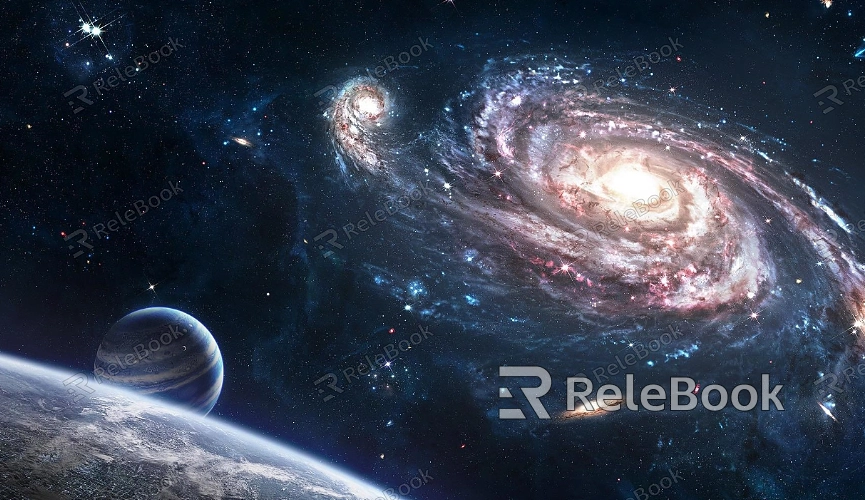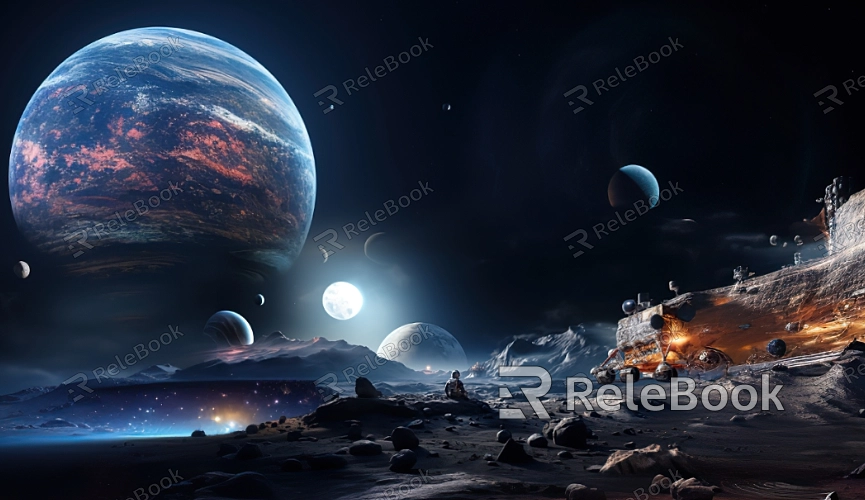Can HDR Space Textures Improve Lighting in 3ds Max
Sci-fi films, game development, and virtual reality projects often require precise lighting effects to enhance visual experiences. In these projects, using HDR (high dynamic range) space textures can significantly improve lighting, particularly in software like 3ds Max. This article will explore how HDR space textures can enhance lighting in 3ds Max and provide specific implementation steps and techniques to help designers achieve greater realism.

1. Understanding the Advantages of HDR
Dynamic Range: HDR technology captures a wider range of brightness, allowing images to display more detail in both bright and dark areas. Compared to traditional images, HDR images can showcase richer colors and more nuanced light variations.
Realism: In 3D scenes, utilizing HDR textures allows for a more natural influence of light sources, enhancing the overall realism. Designers can simulate how light interacts with various surfaces through reflection and refraction.
2. Importing and Setting Up HDR Textures
Importing Textures: In 3ds Max, import the prepared HDR space textures into your project. These textures can be sourced from professional texture libraries, such as Relebook, ensuring high quality and suitability for your needs.
Material Settings: Assign appropriate materials to your models and ensure they respond correctly to HDR light sources. Properly configuring material properties will enhance the effectiveness of the lighting.
3. Adjusting Lighting Settings
Environment Light Source: Use HDR images as environment light sources to provide more uniform illumination in the scene. Designers can adjust the intensity and color of the light source according to the scene's requirements for a more realistic effect.
Localized Light Sources: Place localized light sources at key positions within the scene, combined with HDR effects, to highlight specific elements, such as details on a planet's surface or nebulae in space.

4. Rendering Settings and Post-Processing
Rendering Engine: Choose a rendering engine that supports HDR images, such as V-Ray or Arnold. These engines can fully leverage the benefits of HDR to provide greater detail and realism.
Post-Processing Adjustments: After rendering, use post-processing software to perform color correction and effect adjustments, further enhancing the visual impact of the images. You can tweak contrast, brightness, and saturation to achieve outstanding final results.
5. Testing and Optimization
Repeated Testing: Conduct multiple test renders to evaluate how HDR textures perform under various lighting conditions. This helps designers identify and resolve potential issues.
Optimize Settings: Continuously optimize texture, material, and lighting settings based on test results to ensure every detail in the scene reaches its best appearance.
6. Collecting Feedback and Continuous Learning
Sharing Work: Upload completed projects to design communities or social media platforms to gather feedback from peers and audiences. This helps in identifying areas for improvement and refining skills.
Learning New Techniques: Stay engaged with the work and techniques of other designers by participating in forums and community activities, continually enhancing your creative abilities.
By following these steps, designers can utilize HDR space textures in 3ds Max to enhance lighting effects. This not only increases the realism of the scenes but also elevates the overall visual experience. The application of HDR textures makes lighting more natural, enriching the play of light and shadow, and providing viewers with a deeper immersive experience.
If you're looking for high-quality HDR texture resources, Relebook is an excellent choice. Through Relebook, you can download a variety of top-notch textures, improving the quality of your 3D projects and supporting your creative journey.

